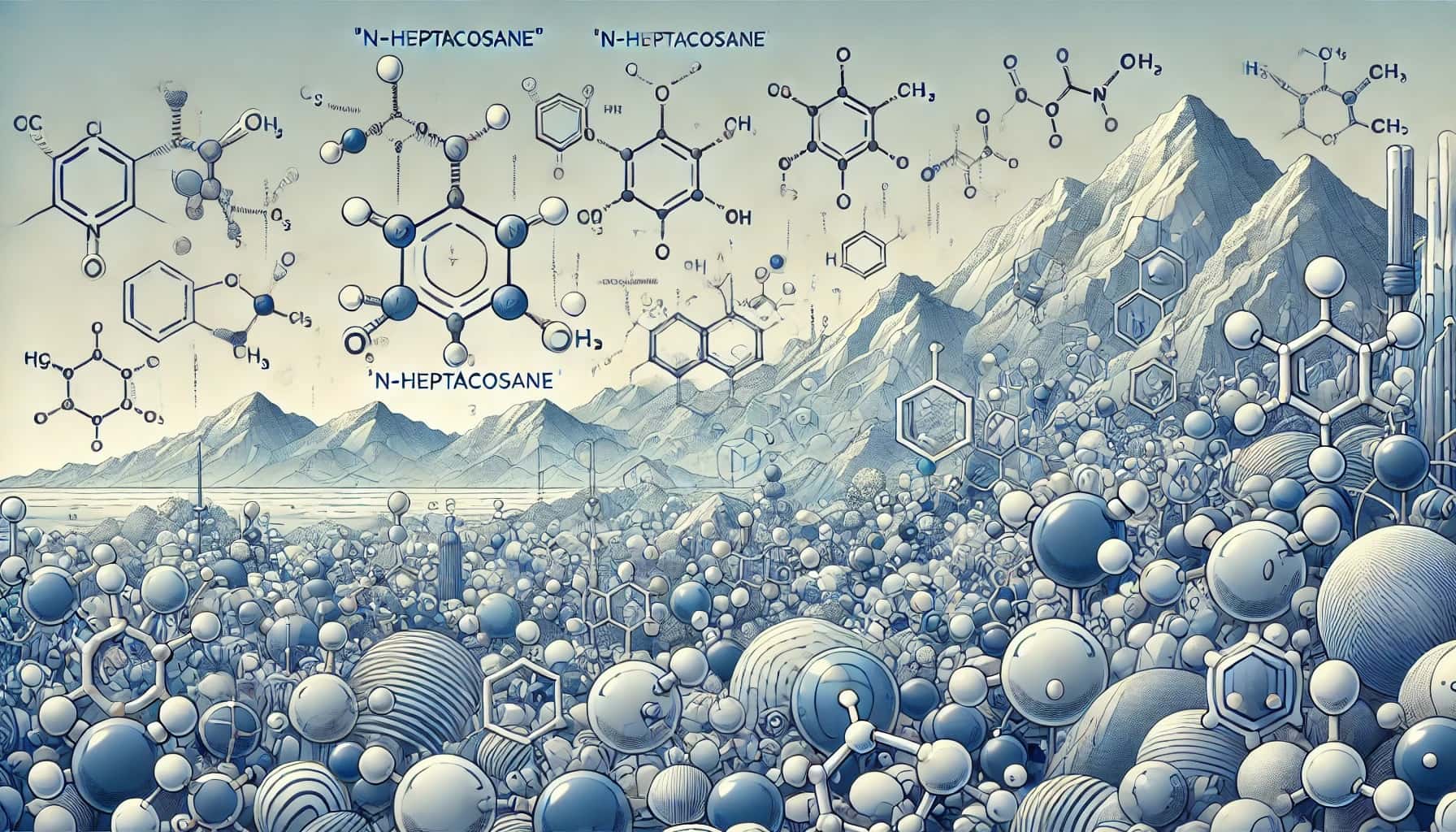
What is n-Heptacosane? This long-chain hydrocarbon, with the chemical formula C27H56, is a saturated alkane. n-Heptacosane is found in nature, often in the waxes of plants and insects. It’s a solid at room temperature, appearing as a white, waxy substance. This compound plays a role in the protective coatings of leaves and insect cuticles. n-Heptacosane is also used in scientific research, particularly in studies involving pheromones and chemical communication. Its high melting point and stability make it useful in various industrial applications, including lubricants and cosmetics. Curious about more? Let’s dive into 15 intriguing facts about this fascinating molecule!
What is n-Heptacosane?
n-Heptacosane is a fascinating compound with a variety of uses and characteristics. This hydrocarbon, part of the alkane family, has a long carbon chain that makes it unique. Let's dive into some interesting facts about n-Heptacosane.
-
Chemical Formula: n-Heptacosane has the chemical formula C27H56. This means it consists of 27 carbon atoms and 56 hydrogen atoms.
-
Molecular Weight: The molecular weight of n-Heptacosane is approximately 380.73 g/mol. This makes it a relatively heavy molecule compared to other alkanes.
-
Physical State: At room temperature, n-Heptacosane is a solid. This is due to its long carbon chain, which increases the van der Waals forces between molecules.
-
Melting Point: The melting point of n-Heptacosane is around 59-61°C (138-142°F). This is relatively high for an alkane, again due to its long carbon chain.
-
Boiling Point: Its boiling point is approximately 468°C (874°F). This high boiling point is typical for long-chain alkanes.
Uses of n-Heptacosane
n-Heptacosane has several practical applications in various fields. Its unique properties make it useful in different industries.
-
Cosmetics: n-Heptacosane is used in cosmetics as an emollient. It helps to soften and smooth the skin.
-
Lubricants: Due to its high melting and boiling points, n-Heptacosane is used in high-temperature lubricants. It helps reduce friction and wear in machinery.
-
Phase Change Materials: n-Heptacosane is used in phase change materials (PCMs) for thermal energy storage. It can absorb and release large amounts of heat during phase transitions.
-
Research: In scientific research, n-Heptacosane is used as a standard for calibrating instruments like gas chromatographs.
Natural Occurrence of n-Heptacosane
n-Heptacosane is not just a lab-made compound. It can be found in nature as well.
-
Plant Waxes: n-Heptacosane is found in the waxes of various plants. These waxes help protect plants from water loss and pests.
-
Insect Pheromones: Some insects produce n-Heptacosane as part of their pheromone blends. These pheromones are used for communication and mating.
-
Marine Organisms: Certain marine organisms, like algae, produce n-Heptacosane. It plays a role in their metabolic processes.
Chemical Properties of n-Heptacosane
Understanding the chemical properties of n-Heptacosane helps us appreciate its versatility.
-
Non-Polar: n-Heptacosane is a non-polar molecule. This means it does not dissolve well in water but is soluble in organic solvents like hexane.
-
Stable: n-Heptacosane is chemically stable. It does not react easily with other substances, making it useful in various applications.
-
Hydrophobic: Being hydrophobic, n-Heptacosane repels water. This property is beneficial in creating water-resistant coatings and materials.
Final Thoughts on n-Heptacosane
n-Heptacosane, a fascinating hydrocarbon, plays a crucial role in various fields. From its presence in beeswax to its use in scientific research, this compound has diverse applications. Its unique properties make it valuable in understanding natural processes and developing new technologies. Whether it's in the lab or nature, n-Heptacosane continues to intrigue scientists and researchers alike.
Understanding its structure and functions can provide insights into broader chemical and biological systems. As we learn more about this compound, its potential uses and benefits will likely expand. So, next time you come across n-Heptacosane, you'll know it's more than just a chemical name—it's a key player in many scientific and natural phenomena.
Stay curious and keep exploring the wonders of chemistry!
Was this page helpful?
Our commitment to delivering trustworthy and engaging content is at the heart of what we do. Each fact on our site is contributed by real users like you, bringing a wealth of diverse insights and information. To ensure the highest standards of accuracy and reliability, our dedicated editors meticulously review each submission. This process guarantees that the facts we share are not only fascinating but also credible. Trust in our commitment to quality and authenticity as you explore and learn with us.


